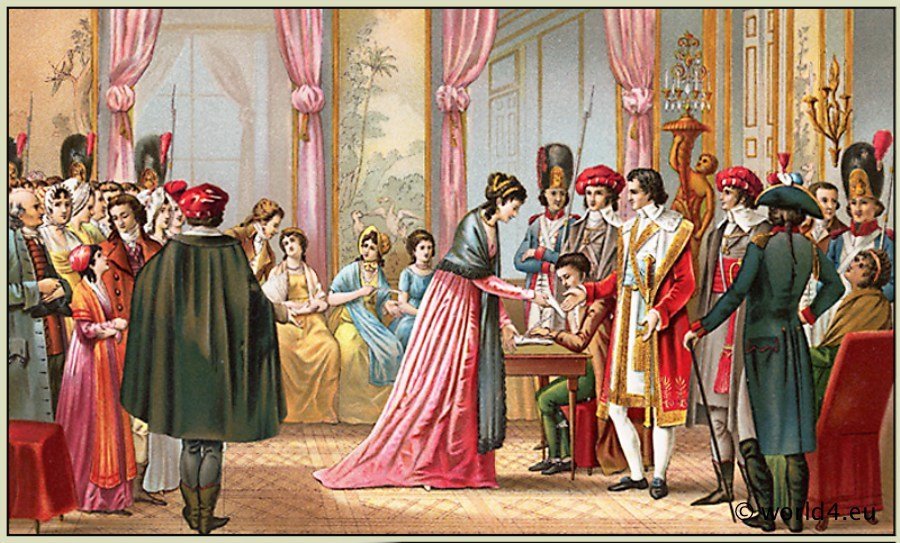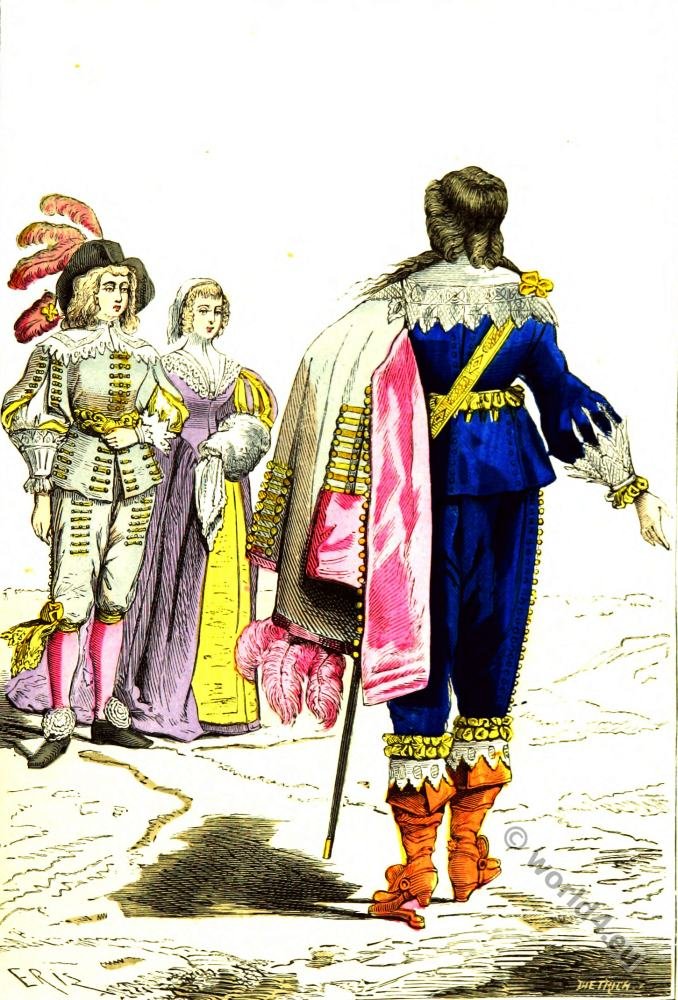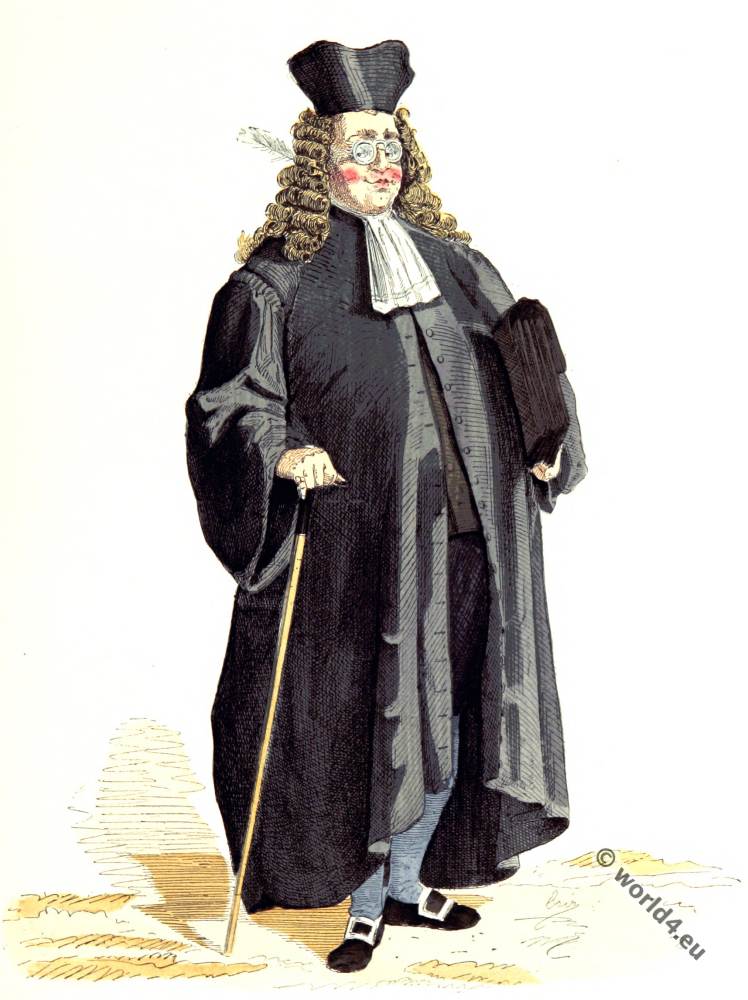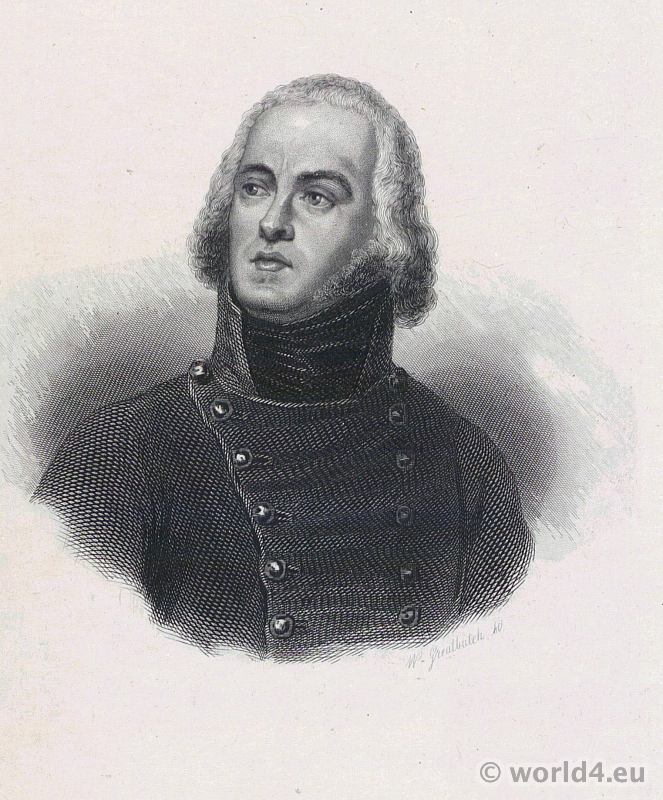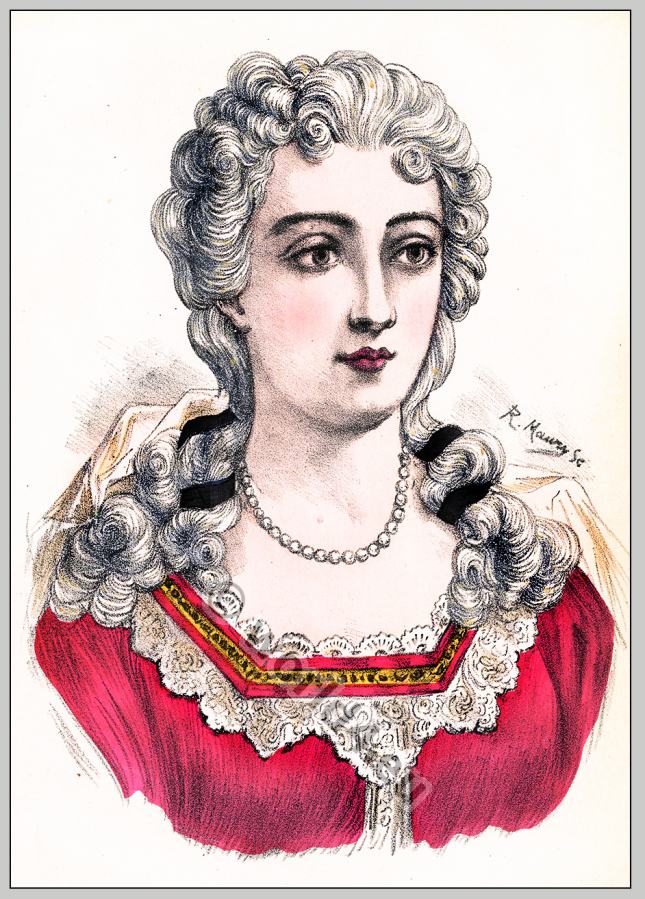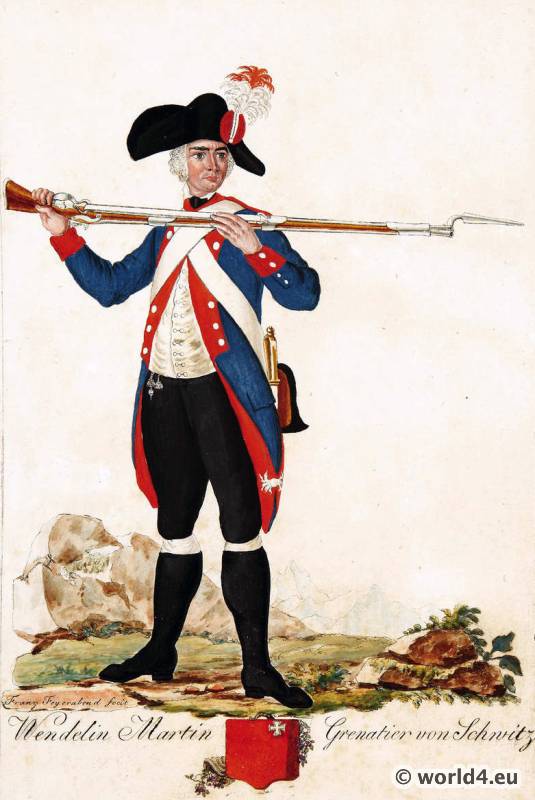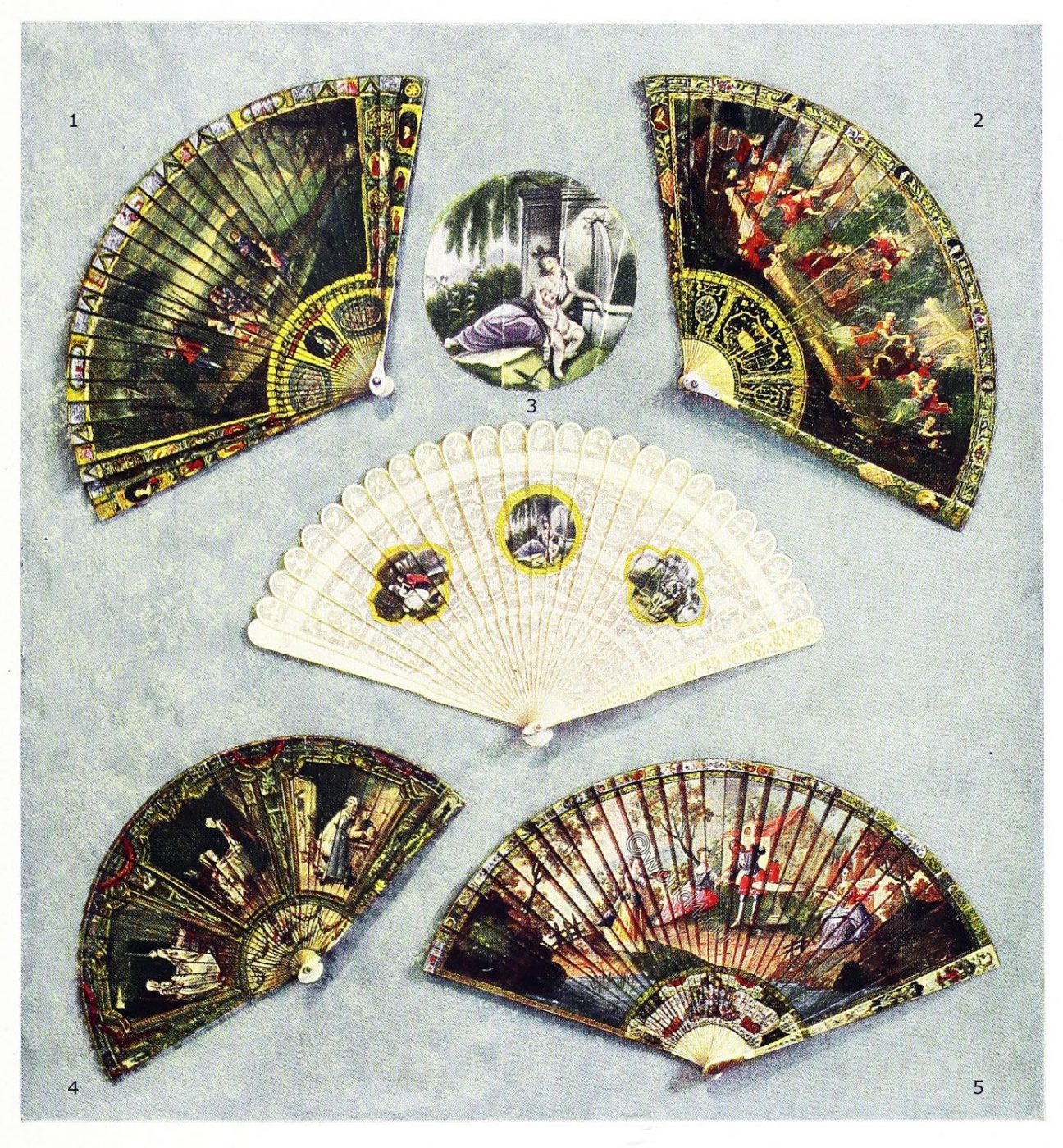
Fan decoration of the reign of Louis XIV., and during the first part of the reign of Louis XV. was greatly improved by the celebrated Vernis Martin (Martin’s Varnish). In 1728 an ingenious coach painter of that name had succeeded in discovering a varnish which equalled the translucent, enamel-like varnish of China and Japan. It is supposed that he was skilled in all the decorations then lavished upon carriage panels, all kinds of furniture and sticks, and that he probably applied his talent to fan decoration as painters engaged in the same profession often did.
In the days of Madame du Pompadour Vernis Martin had a great vogue, and panels prepared by Martin were elaborately painted upon by Lancret and Boucher. To this day his varnish retains its lustre undimmed, and specimens command high prices.
The foregoing explanation has been given because Vernis Martin fans differ widely among themselves, although they can never be mistaken for any other style. Some have the pompous subjects and conventional treatment which we associate with Louis XIV., and are decorated in the Chinese style; while those made later are more in the manner of Watteau and Boucher. Dealers are apt to insist that every painted and varnished ivory fan is a “real Vernis Martin,” and worth a great deal of money; but beginners at collecting may do well to remember that the fashion for these fans lasted a considerable time, and many poor ones were turned out by inferior artists.
Four French Vernis Martin Fans and One of Ivory Brisé.
No. 1. A Vernis Martin fan of the Régence period attributed to Van Loo. Pastorelle subject: blades, guards and borders enriched with portrait medallions and vignettes in the Chinese taste.
No. 2. A Vernis Martin fan of the Régence period. Bacchanal Hommage au Dieu des Flaçons. Blades painted to simulate à jour carvings. Guards and edge with medallions of ladies of the Regent’s court.
No. 3. French ivory brisé fan of the period Louis Seize, with three medallions painted with gallant subjects in the style of Baudouin. Blades carved in the Chinese taste with houses and flowers. The center medallion is shown above.
No. 4. A Vernis Martin fan of the period Louis Seize, painted in reserves with genre subjects after Chardin. Blades, guards and border with medallions after Callot. Rhinestone rivet.
No. 5. A Vernis Martin fan of the period Louis Quinze. Pastorelle. Exterior with figures in Louis Quatorze costumes. Blades, guards and borders lacquered in the Indo-Chinese taste.
Source: A book about fans; the history of fans and fan-painting by M. A. Flory; Mary Cadwalader Jones. New York, London, Macmillan and co. 1895.

